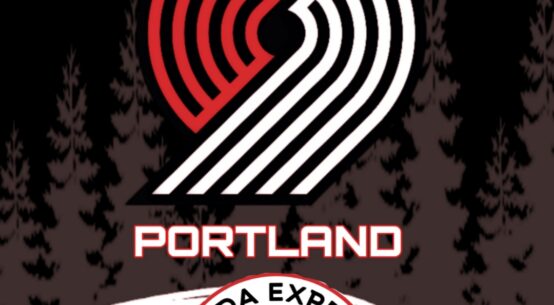Fraud Scheme | Academic Institutions | Society
Lawsuit Background
A whistleblower lawsuit, filed in 2024 and recently unsealed, alleges that Full Sail University and The Los Angeles Film School (LAFS) engaged in a long‑running fraud scheme involving the manufacture of temporary, superficial employment opportunities for graduates in order to mislead regulators, accreditors, and potential students. (WFTV)
According to the complaint:
- Full Sail and LAFS are accused of self‑financing “temporary employment opportunities” for graduates in collaboration with nonprofits and vendors. Graduates are allegedly hired for short stints—sometimes as few as 3‑4 days—so the institutions can count them as “employed” in their regulatory/ accreditation/ reporting metrics. (WFTV)
- These “jobs” are allegedly arranged with production companies or similar organizations, who are told to employ certain graduates, using the school’s facilities for free or at below cost. The employment is nominal: long enough to record “employed” but not substantial in duration or responsibility. (WFTV)
- The lawsuit alleges that these practices violate gainful employment requirements under federal law, as well as accreditation standards. Full Sail reportedly receives over US$377 million annually in federal financial aid funds. The claim is that many of those funds derive from misleading employment outcomes. (WFTV)
- Plaintiffs in the case include two former executives of LAFS: David Phillips (former VP of Career Development) and Ben Chaib (former VP of Admissions) who are represented by attorney Mark Kleiman. (WFTV)
Full Sail’s response: The university “emphatically denies” the claims, says the plaintiffs were never employees of Full Sail, and that the allegations mischaracterize the facts. Full Sail states it is “committed to compliance with all regulatory requirements.” (WFTV)
Legal Issues & Theories
Several legal theories and key legal/regulatory issues are implicated in this case:
- False Claims / Misrepresentation
If Full Sail or LAFS certified or reported to the U.S. Department of Education or accrediting bodies that graduates were gainfully employed, when in fact many of those “jobs” were nominal or artificially created for reporting purposes, that may constitute misrepresentation. This could implicate federal statutes, possibly the False Claims Act, depending on how the financial aid programs are structured. - Violation of “Gainful Employment” Rules
The U.S. Department of Education has rules (or had rules, in certain versions over time) requiring certain programs to meet metrics on how graduates are doing in the job market. If an institution fails to meet those metrics, sanctions may follow, including loss of eligibility for federal student aid. Artificially manufacturing employment to meet these metrics could be a violation. (WFTV) - Accreditation Standards
Accrediting agencies require truthful reporting of outcome data (employment, salaries, etc.). If data are inflated or misleading job placements are counted, then accreditation status could be at risk. - Whistleblower / Qui Tam Claims
The case was brought by insiders (former LAFS executives), which suggests use of whistleblower or qui tam mechanisms. These often allow individuals to bring suit in the name of the government when fraud is alleged against federal programs. The whistleblower status can bring additional protections and potential rewards. (WFTV) - Standing & Proof of Harm
Plaintiffs will need to show that the graduates (and possibly the government/taxpayers) were harmed—that the “fake jobs” scheme caused measurable harm (e.g. students misled, debt burdens, lost opportunity, etc.). It must be shown that reporting fake or temporary jobs had real consequences (financial, educational, reputational). - Defendant Defenses
Full Sail and LAFS will likely defend by disputing that the jobs are “fake,” by arguing the plaintiffs are mischaracterizing the nature of the employment; that the employment met minimum legal requirements; and/or that the gainful employment metrics or accreditation standards do not require what plaintiffs say they require. They may also dispute jurisdiction, factual allegations, scope, and possibly the applicability of certain statutes.
Regulatory & Policy Implications
- Federal Oversight of For‑Profit Institutions: The case sheds light on the scrutiny on for‑profit colleges and their obligations around job placement, employability, and truthful marketing. There is growing concern in regulatory and Congressional circles about misleading career outcome statistics.
- Consumer Protection / Higher Education Transparency: If proven, the allegations could push for tighter rules on transparency—the marketing materials schools use, how they present statistics about job placements and salaries to prospective students, etc.
- Risk to Accreditation & Funding: Losing accreditation or federal student aid eligibility can have serious consequences. Institutions depend heavily on federal aid funding; if key programs lose that, it affects operations.
- Precedent Potential: A successful claim may open up exposure for other schools with similar practices. It may also spur class action suits or broader whistleblower suits.
Challenges & What to Watch
- Proof and Discovery: Plaintiffs will need to produce evidence such as internal emails, contracts with nonprofits/vendors, job placement records, and perhaps comparisons between reported outcomes vs. actual duration and nature of employment.
- Statutory Interpretation: How exactly gainful employment standards and accreditation requirements are defined will matter a lot. Court interpretation of those will affect whether the conduct alleged is actionable.
- Materiality & Intent: To show fraud under federal statutes (or False Claims Act), the plaintiffs must show that the misrepresentations were material, that is, that they affected decisions by regulators/funders, and that defendants acted knowingly or recklessly.
- Damages & Who’s Harmed: Identifying which graduates were harmed, quantifying the harm (financial, lost opportunity, debt), and determining what relief is appropriate. Also, whether taxpayers or government agencies can recover funds.
- Defendant’s Characterization of Plaintiffs: Full Sail already claims that the individuals bringing the suit never worked for Full Sail and that Full Sail is being unfairly included. That fact may be a focal point of motions.
Potential Outcomes
- The case could settle if the defendant thinks exposure (both legal and reputational) is large enough. Settlements might include monetary compensation, changes in reporting requirements, or oversight or compliance obligations.
- If it goes to trial and the plaintiffs win, Full Sail (and LAFS) could be required to repay misused federal funds, revise employment reporting practices, and potentially lose federal student aid eligibility for programs or accreditation.
- Even if plaintiffs do not completely prevail, the case may lead to regulatory investigations by the Department of Education or accrediting agencies, possibly administrative penalties.
Broader Implications
This lawsuit highlights broader tensions in U.S. higher education: for‑profit institutions often rely heavily on marketing job outcomes to attract students, many of whom finance their education through federal student aid. If those outcome statistics are misleading, the harm goes beyond the students to taxpayers and undermines trust in higher education oversight.
It may also influence future policy changes—Congress or regulatory bodies may push for stricter verification of employment claims, more transparency requirements, or more aggressive oversight of for‑profit schools.






